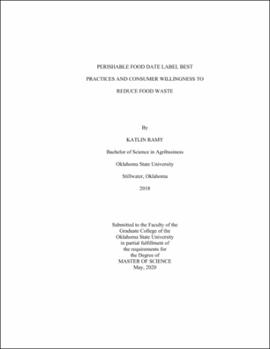| dc.description.abstract | Food waste is a prominent food policy issue that is caused by many factors, with food expiration date labeling on perishable food items as a contributory factor. Perishable food items may have more than one expiration date label, causing ambiguity among consumers. The most common food expiration date labels are Best If Used By, Use By, and Sell By. The primary objective of this research is to determine which food expiration date labels reduce consumer ambiguity about perishable labels and to quantify consumer willingness to reduce food waste. Data were collected via an online survey distributed by Qualtrics to accomplish the research objective. The survey resulted in a nationally representative sample of adults over 18 years of age. 1,050 participant responses were collected with a 93.1% response rate. A series of chi-square tests were performed to determine if the survey results for the perishable labels differed among the demographic variables of gender, age, race, region, education level, marital status, income level, and primary shopper status. Consumer utility was estimated as a function of large package percent loss (waste), small package percent price increase, package size, product, other product, age, race, region, education level, marital status, income level, primary shopper status, and self-identified food waste importance to determine if consumers receive more utility by reducing food waste. This research followed the traditional framework of willingness to pay (WTP) to quantify consumer willingness to reduce food waste. This research revealed the Best If Used By and Use By perishable labels are interpreted more ambiguously than the Sell By perishable label, and consumers are willing to reduce food waste to obtain a higher level of utility. From these results, it may be necessary to determine a universal label date to lessen consumer ambiguity on label date terminology and offer smaller package sizes in grocery stores to help aid in food waste reduction. | |
